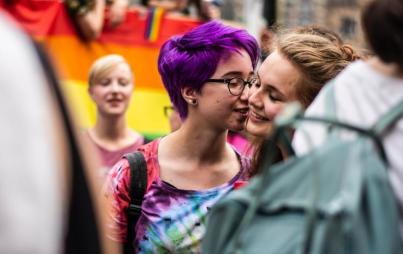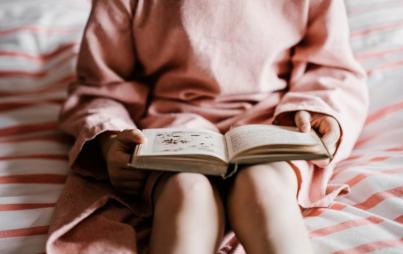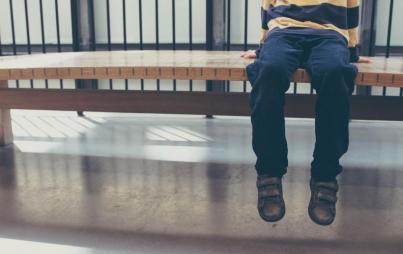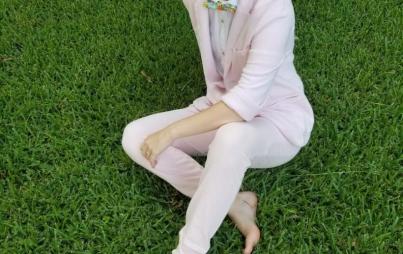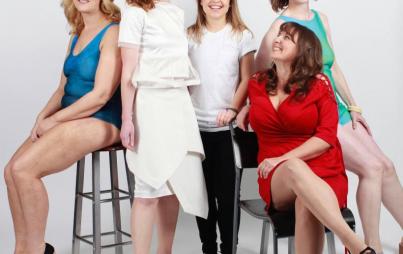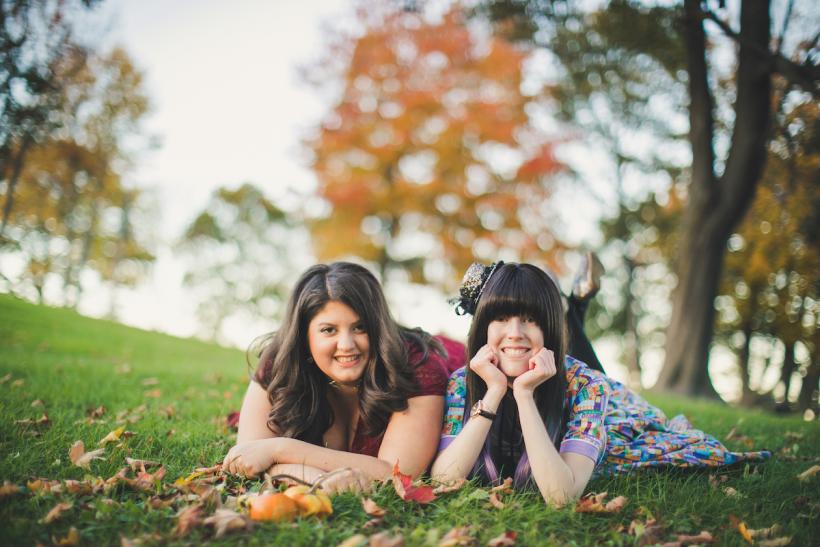
When Macey and I planned our engagement photos, I knew I wanted my sparkly, bright lavender cane to be in them. (photo by Ginny Cummings Photography)
My partner Macey was with me when I tried out my first cane two years ago at a Walgreens down the street from our apartment. I was about to begin my last year of graduate school and symptoms of my disability, Ehlers-Danlos syndrome, were progressing; I had more difficulty with balance and coordination, I was in pain more often, and navigating the busy subway was harder than usual. She listened to all my questions about whether I’d still be attractive with a cane and my frustration when strangers in the elevator asked me what was wrong with me.
At the time, I never could have imagined that I’d willingly want my cane in photos.
I posted a picture with it on my first day of class mainly as a quick way to introduce the fact to people that they might see me around with it so I could dodge awkwardness. Although I’ve been disabled my entire life, I also always hated intrusive questions about my disability. I didn’t like being stared at because I have a mobility aid or I was having trouble doing something, and I feared having to constantly explain to people how my disability impacts my daily life and brace myself to become either pitiable or inspiring, depending on the day.
For a long time, I wasn’t proud of my disability and I wanted to hide it as much as possible. I wouldn’t use doctor-prescribed mobility aids and other tools because I didn’t want to appear different. But this year, when I asked Macey to marry me, I realized something.
I realized I’d never seen a visibly queer disabled person in engagement or wedding photos.
I’ve rarely seen someone that looks like me at all.
Visibility and representation have always been a major factor in how I view myself. Leigh Bardugo’s Six of Crows series helped me feel seen and worthwhile as a young cane user, so much so that I named my own purple cane after her character Kaz, a badass criminal prodigy who proudly walks with a cane. Participating in Keah Brown’s #DisabledAndCute — and finding my place in the disability community — was the first time I actively expressed radical self-love for my body as it is, not as I or anyone else wished it could be. When I met fellow disability activist Karin Hitselberger in person, we made sure not only to take a selfie but to have a full body photo taken with both our mobility aids in the shot. Sixteen-year-old me never would’ve taken a photo with my cane in it. She would’ve tossed it to the side with her coat and purse and carefully cropped it out of the shot.
When Macey and I planned our engagement photos, I knew I wanted my sparkly, bright lavender cane to be in them.

I want my cane to be in some of our wedding photos too. My cane is a huge part of my life and me. It was with us when I crossed the stage to get my master’s degree and when I needed to call an Uber on my twenty-fifth birthday because I was in too much pain to walk the ten minutes home from the train station.
You Might Also Like: What It’s Like To Live With An “Invisible” Disability
My cane is a part of me even when it isn’t physically with me — when I proposed and needed to sleep in an extra two hours to recover from the long day, or when I’m at the beach and lean on Macey instead to get over the unstable dunes because canes on sand aren’t exactly a perfect accessibility match.
My disability isn’t always visible. It essentially becomes invisible when I don’t have my cane, except to people who are very familiar with mobility impairments and disabilities like Ehlers-Danlos syndrome. I don’t have my cane with me all the time, so in spur-of-the-moment photo taking, it may or may not be present. And the truth is that because of the nature of EDS, sometimes I need my cane more on certain days than others. I can go weeks without experiencing any symptoms and then be entirely dependent on my cane for a month. That’s all part of my relationship to myself and to my fiancée, who has been completely supportive in her allyship to the disability community.
My cane is a physical manifestation of my identity as a disabled person, and that’s something that is always part of me, just as my queer identity is.
I have had to unpack years of internalized ableism to get to this point. It would’ve been easier if I had the opportunity to see myself in a fictional character or a real person more often. I’m grateful for people like YouTubers Jessica Kellgren-Fozard and Annie Segarra and writer Carrie Wade for showing up as disabled queer people in such public ways.
Part of my choice to include my cane in momentous romantic photos is because it’s a reality of my life, and part of it is because I hope it reaches at least one queer disabled person who feels less alone as a result. I want my photos to encourage a disabled person that it’s okay to use a mobility aid if they need one and that they can be proud of who they are. I want them to show a teenager who, like me, might be worried they won’t find love or happiness because of their disability just how untrue that is. I want people to see my photos and understand that disability isn’t something they need to hide, that I’m proud of who I am with and without my cane.

It was an active choice to include my cane in my engagement photos — it’s my way of making myself visible exactly as I am and sharing my radical self-love with the world. It’s my love letter to every queer disabled person out there: You exist, you are worth loving, and you can be proud to show up in the world.




